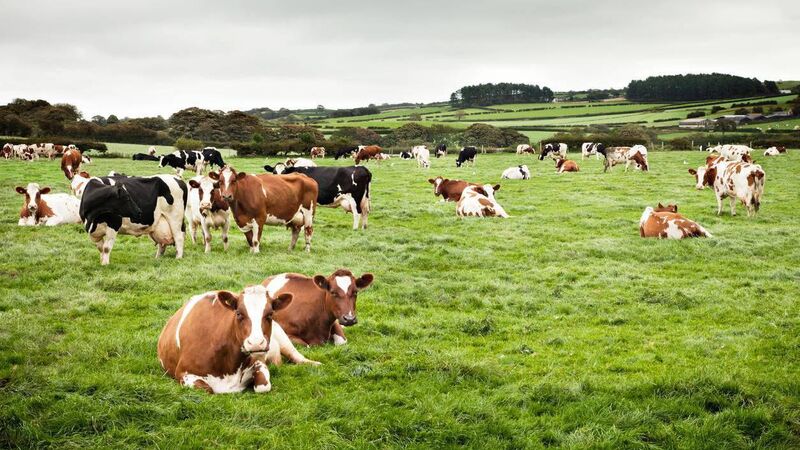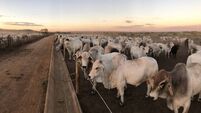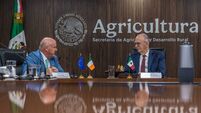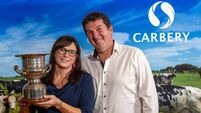Teagasc director: New nitrates banding will force stocking rate reduction

A pilot programme for anaerobic digestion is likely to be rolled out soon.
There might be no official mandatory climate-related reductions in cattle numbers planned, however, the Nitrates Directive is putting downward pressure on stocking rate, said Teagasc Director Professor Frank O’Mara in a recent presentation.
He said banding in the nitrates regulations, based on milk yield, will move about 17% of herds from 89kg of organic nitrogen excretion per cow to the next band at 106kg per cow, and will force at least some to reduce stocking rate.
Nitrates regulations also include a 10% cut in the maximum fertiliser use at all stocking rates, which could be increased to 15% in a mid-term review of the 2022 to 2025 Nitrates Action Programme. Also possible is reducing the maximum of 250kg of organic N/ha to 220kg in the mid-term review, depending on water quality.
On other government interventions, a pilot programme for anaerobic digestion is likely to be rolled out soon, said the Teagasc Director.
Professor O’Mara delivered his presentation on the Irish approach to meeting climate targets in livestock farming systems during an online workshop organised by the EU Commission's Directorate-General for Agriculture and Rural Development, and Joint Research Centre.
By 2030, Ireland must reduce agricultural emissions by between five and seven million tonnes of carbon dioxide equivalent (from a 2018 baseline of 23 million tonnes into a range of 16-18m tonnes).
Professor O’Mara envisaged measures initially reducing emissions by 2m tonnes, mainly around nitrous oxide emissions, such as using protected urea, and improving breeding efficiency and animal health, all driven by Teagasc's Signpost advisory programme (in which the main objective is to enable farmers to reduce emissions while remaining profitable and sustainable).
Then additional measures with technologies which are now almost ready would be implemented, such as reducing the slaughter age of beef cattle, and the use of feed additives for housed bovines. Finally, measures not yet ready, such as feed additives at pasture and breeding low-emitting animals, would be deployed.
On feed additives to reduce methane production, Professor O’Mara said 3-NOP (Bovaer, approved for sale in Brazil and Chile last year) is the only additive so far with a well-proven, consistent and long-term effect of about 30% reduction in enteric methane from cattle. But it must be fed continuously.
He noted the Irish dairy industry does not want to move away from the current system, which is heavily based on grass, so there is a big interest in developing a methane-reducing system for grazing cows. But its cost will be an issue.
The Teagasc Director said farmers would be encouraged to transition towards climate-neutral agriculture by 2050 by regulation and strategy development, incentives, and advisory support and research.
Commenting on the Dairy Group recommendation to reduce chemical nitrogen use by 30% on dairy farms by 2030, he said farmers can replace chemical N with legume-fixed N (from clover, for example), with increased nitrogen use efficiency, good soil pH and P and K status, and better use of organic manures.
The recommended chemical nitrogen reduction is between 22% and 25% in the short term (by 2025).
The Food Vision Dairy Group targets 100% replacement of CAN with Protected Urea by the end of 2025 for grass-based dairy systems. Professor O’Mara said there is good acceptance of this among farmers, but the availability of product is an issue. He wasn't clear how these nitrogen measures will be implemented, but they will be supported by a new Fertiliser Register.
The Food Vision Dairy Group (chaired by the previous Teagasc Director, Professor Gerry Boyle) was established to make recommendations to the Agriculture Minister on measures to "initially stabilise and then reduce emissions" from the dairy herd, which is responsible for about 40% of agricultural emissions.
Other Food Vision Dairy Group recommendations include exploring the potential of a Cap-and-Trade emissions model (setting a cap on emissions consistent with the sectoral carbon budgets, assigning emission production rights to individual farmers, and allowing farmers to trade these rights).
The Dairy Group also wants an investigation of measuring and monitoring carbon production at individual farm level, irrespective of whether a Cap-and-Trade Scheme is to be introduced.
CLIMATE & SUSTAINABILITY HUB












